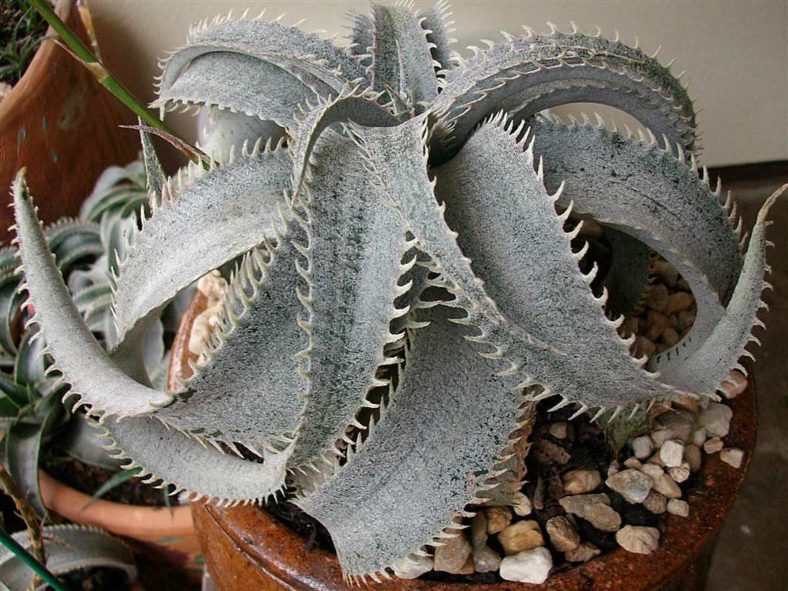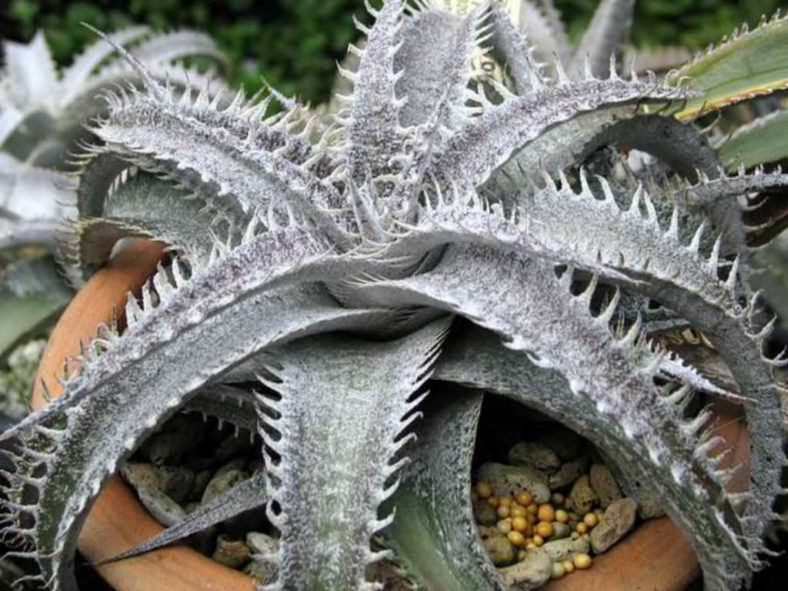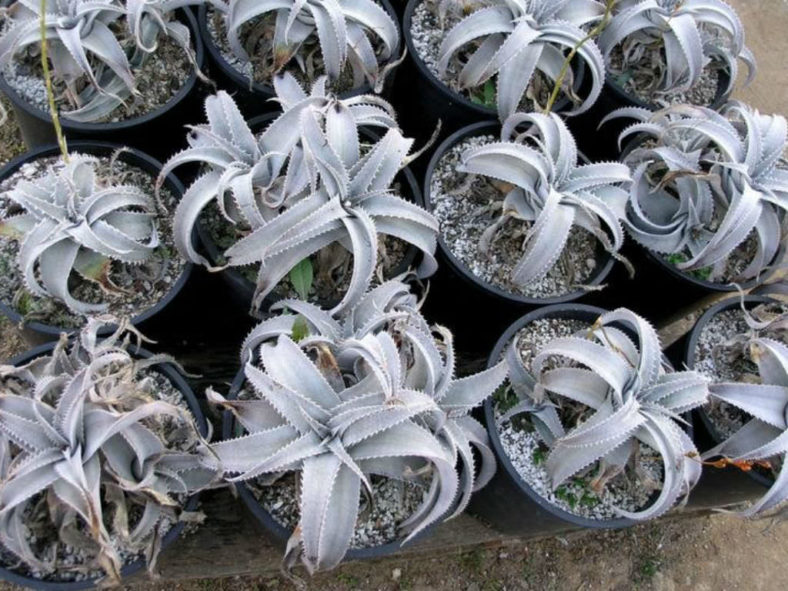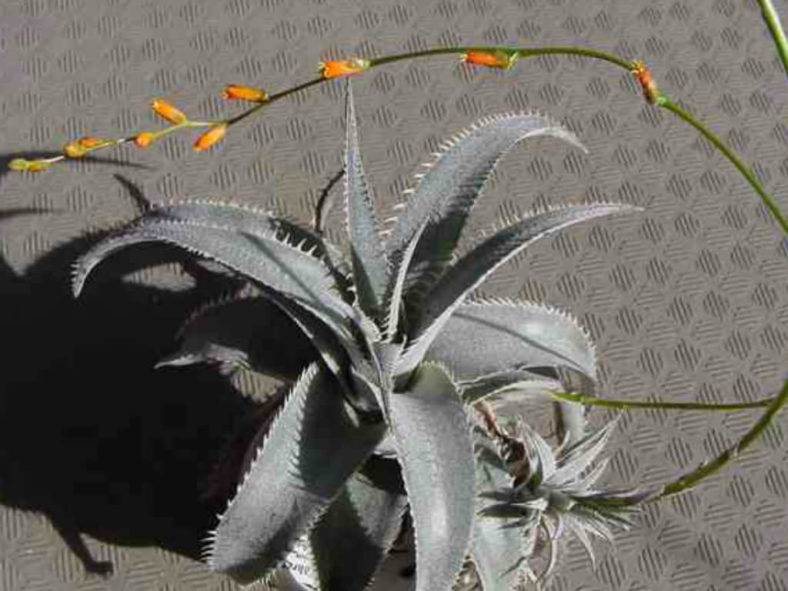Scientific Name
Dyckia marnier-lapostollei L.B.Sm.
Common Name(s)
White Dyckia
Synonym(s)
Dyckia marnier-lapostollei var. marnier-lapostollei
Scientific Classification
Family: Bromeliaceae
Subfamily: Pitcairnioideae
Genus: Dyckia
Etymology
The specific epithet "marnier-lapostollei (pronounced MAR-nee-air lah-pos-STOL-ee-eye)" honors Julien Marnier-Lapostolle (1902-1976), who owned the Jardin botanique "Les Cèdres" where the first specimen of the species was known to flower in 1960.
Origin
Dyckia marnier-lapostollei is native to Brazil. It occurs in Goiás, growing in rock crevices at elevations between 3,940 and 4,100 feet (1,200 and 1,250 m).
Description
Dyckia marnier-lapostollei is a slow-growing plant that forms a stemless, spreading, usually solitary rosette of gray-green, triangular leaves covered in silvery-white, scale-like hairs. The rosette can grow up to 10 inches (25 cm) in diameter, while the leaves can reach a length of 8 inches (12 cm). The leaves twist and curl as they recurve downward and have large claw-like recurved spines along the margins.
Mature plants can send a spike with tubular, orange-yellow flowers scattered near the tip in the summer. The flower spike can grow up to 3 feet (90 cm) tall.

Hardiness
USDA hardiness zones 10a to 11b: from 30 °F (−1.1 °C) to 50 °F (+10 °C).
How to Grow and Care
Dyckias are not technically succulents; they do not store water in their leaves like true succulents. Instead, they are xerographic and survive long periods without water by going dormant. Their rosette of thick, succulent leaves will eventually wilt, but recovery is rapid when watering is resumed.
Most plants survive in warm regions with heavy rainfall for half the year and very dry conditions the rest of the time. This makes Dyckia care slightly challenging, as getting the right moisture balance to keep the plant happy may be difficult. The growing conditions in their natural setting should be mimicked as much as possible.
In their native region, it is common to find some forms growing on top of rocks near the water. Water and the cycle of the monsoon season are important features of Dyckia's health. They are used to rather poor soil when they grow in-ground and should be planted in a good, succulent mixture.
Learn more at How to Grow and Care for Dyckia.
Links
- Back to genus Dyckia
- Succupedia: Browse succulents by Scientific Name, Common Name, Genus, Family, USDA Hardiness Zone, Origin, or cacti by Genus
Photo Gallery
Click on a photo to see a larger version.


